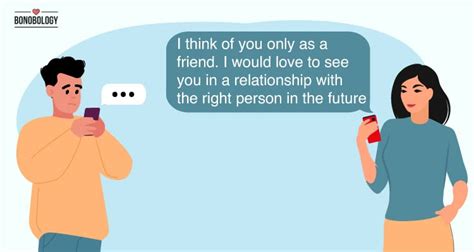
Dating coach Hayley Quinn says the seemingly innocuous word “nice” can often signal a woman’s polite rejection of a romantic advance. Quinn, in a recent social media post, dissected how women use “nice” as a gentle let-down, often to avoid direct confrontation or potential discomfort.
Hayley Quinn, a prominent dating expert, has ignited a social media discussion by identifying a single word that women frequently use to subtly reject romantic advances: “nice.” According to Quinn, the seemingly harmless adjective often serves as a polite buffer, signaling a lack of romantic interest while avoiding a more direct and potentially awkward confrontation. This revelation has resonated widely, prompting both men and women to examine the nuances of communication in the dating world.
Quinn’s analysis centers on the idea that women, often socialized to be accommodating and avoid conflict, may opt for indirect communication strategies when declining unwanted attention. The word “nice,” in this context, becomes a tool for softening the blow of rejection. Instead of explicitly stating a lack of attraction or interest, a woman might describe a man as “nice” to acknowledge his positive qualities without implying any romantic connection.
“If she just says you’re ‘nice’… that is her way of rejecting you,” Quinn explained in her viral social media post. She elaborated that this usage of “nice” typically means the woman does not see the man as a potential romantic partner, but she also doesn’t want to hurt his feelings or create an uncomfortable situation.
The dating landscape is fraught with unspoken rules and subtle cues. Quinn’s observation sheds light on one such cue, urging individuals to pay closer attention to the language used during interactions. Understanding the potential hidden meanings behind seemingly innocuous words can help navigate the complexities of dating with greater awareness and sensitivity.
The concept of indirect communication, particularly in the realm of dating, is deeply rooted in societal expectations and gender dynamics. Women, in many cultures, are often taught to prioritize politeness and avoid confrontation, which can lead them to adopt indirect strategies when expressing disinterest. This behavior is not necessarily a reflection of dishonesty, but rather a manifestation of social conditioning and a desire to maintain harmonious interactions.
Quinn’s analysis also highlights the importance of self-awareness and emotional intelligence in the dating process. Recognizing that “nice” might be a subtle rejection can help men avoid misinterpreting signals and potentially escalating unwanted advances. Similarly, women can become more conscious of their communication patterns and consider whether their use of “nice” is accurately conveying their intentions.
The discussion sparked by Quinn’s post underscores the ongoing challenges of communication in the digital age. With the rise of online dating and social media interactions, nonverbal cues and body language are often absent, making it even more difficult to interpret intentions accurately. Paying close attention to word choice and understanding the potential subtext behind seemingly simple language can be crucial for navigating these virtual landscapes.
Furthermore, the “nice” rejection phenomenon can be viewed through the lens of power dynamics. Women, who often face a higher risk of harassment or even violence when rejecting men directly, might use indirect communication as a safety mechanism. By softening the rejection with a word like “nice,” they can potentially de-escalate the situation and avoid triggering a negative reaction.
Quinn’s advice isn’t just for men deciphering women’s signals; it also prompts women to consider their own communication styles. Are they being truly honest about their feelings, or are they relying on indirect cues to avoid discomfort? Open and honest communication, while sometimes challenging, is ultimately the foundation of healthy relationships.
The broader implications of this discussion extend beyond the dating world. Understanding the nuances of indirect communication can be valuable in various social and professional settings. Recognizing that people may not always express their true feelings directly can help improve interpersonal relationships and foster more effective communication in general.
Several relationship experts have weighed in on Quinn’s observation, supporting the idea that “nice” often carries a hidden meaning. They emphasize the importance of looking beyond the literal definition of the word and considering the context in which it is used. Body language, tone of voice, and other nonverbal cues can provide additional clues about the speaker’s true intentions.
The conversation also raises questions about the pressure to be “nice” in social interactions. While politeness is generally valued, it can sometimes come at the expense of honesty and authenticity. Finding a balance between being kind and expressing one’s true feelings is a challenge that many people face, particularly in situations where rejection is involved.
In conclusion, Hayley Quinn’s analysis of the word “nice” as a subtle rejection signal has sparked a valuable discussion about communication, gender dynamics, and the complexities of the dating world. By understanding the potential hidden meanings behind seemingly simple language, individuals can navigate social interactions with greater awareness and sensitivity. While “nice” itself isn’t inherently negative, its use in certain contexts, particularly when devoid of other positive affirmations, should be heeded as a possible sign of disinterest. This awareness can lead to fewer misunderstandings and a more honest and respectful dating environment.
Expanded Analysis and Background
Hayley Quinn’s observation about the word “nice” serving as a subtle rejection is more than just a dating tip; it’s a reflection of broader societal trends and communication patterns. To fully understand the significance of this seemingly simple insight, it’s necessary to delve deeper into the underlying factors that contribute to its prevalence.
The Socialization of Women and Indirect Communication:
One of the key factors at play is the way women are socialized to communicate. From a young age, girls are often encouraged to be agreeable, accommodating, and avoid conflict. This socialization can lead women to develop indirect communication strategies, particularly in situations where they need to deliver potentially negative news.
Direct rejection, especially when dealing with men they perceive as potentially volatile, can be fraught with risk. The fear of a negative reaction, ranging from persistent pestering to outright aggression, can prompt women to opt for more subtle and indirect methods of expressing disinterest. Using the word “nice” as a buffer allows them to soften the blow of rejection and potentially avoid escalating the situation.
The Importance of Context and Nonverbal Cues:
While Quinn’s analysis focuses on the word “nice,” it’s crucial to remember that context is everything. The meaning of “nice” can vary depending on the tone of voice, body language, and other nonverbal cues. A genuine compliment, delivered with enthusiasm and accompanied by positive body language, is very different from a lukewarm “nice” uttered with a forced smile and averted eyes.
Therefore, it’s essential to look beyond the literal definition of the word and consider the overall communication dynamic. Is the woman making eye contact? Is she engaged in the conversation? Is she using other positive adjectives to describe the man? These are all factors that can help determine whether “nice” is a genuine compliment or a subtle rejection.
The Impact of Online Dating and Digital Communication:
The rise of online dating and digital communication has further complicated the dating landscape. Without the benefit of face-to-face interactions and nonverbal cues, it can be even more difficult to interpret intentions accurately. Text-based communication can be particularly prone to misinterpretation, as tone and context are often lost in translation.
In this digital environment, the use of “nice” as a rejection signal can become even more prevalent. Women might rely on this subtle cue to avoid direct confrontation in online interactions, where they might feel less safe or comfortable expressing their true feelings.
The Pressure to Be “Nice” and the Desire to Avoid Conflict:
The pressure to be “nice” is a pervasive social force that affects both men and women. In many cultures, politeness and agreeableness are highly valued, and people are often judged harshly for being perceived as rude or confrontational.
This pressure can make it difficult for people to express their true feelings, especially when those feelings are negative. The desire to avoid conflict can lead people to adopt indirect communication strategies, even when it would be more honest and effective to be direct.
The Role of Emotional Intelligence and Self-Awareness:
Recognizing the potential for “nice” to be used as a rejection signal requires a certain level of emotional intelligence and self-awareness. Men who are emotionally intelligent are more likely to pick up on subtle cues and avoid misinterpreting signals. They are also more likely to be respectful of women’s boundaries and avoid pushing for a romantic connection when it is not reciprocated.
Similarly, women who are self-aware are more likely to understand their own communication patterns and consider whether their use of “nice” is accurately conveying their intentions. They can also learn to be more direct and assertive in expressing their feelings, while still maintaining politeness and respect.
Moving Beyond “Nice”: Fostering Honest and Open Communication:
Ultimately, the goal is to move beyond the reliance on subtle cues and foster more honest and open communication in the dating world. This requires a shift in societal attitudes and expectations, as well as a commitment from individuals to be more direct and authentic in their interactions.
Men can contribute by being more receptive to subtle cues and avoiding the temptation to pressure women for a romantic connection. They can also create a safe and respectful environment where women feel comfortable expressing their true feelings without fear of negative consequences.
Women can contribute by becoming more aware of their own communication patterns and practicing being more direct and assertive in expressing their intentions. They can also challenge the societal pressure to be “nice” at all costs and prioritize honesty and authenticity in their relationships.
The Broader Implications for Interpersonal Communication:
The insights gleaned from analyzing the “nice” rejection phenomenon extend beyond the dating world. Understanding the nuances of indirect communication can be valuable in various social and professional settings.
Recognizing that people may not always express their true feelings directly can help improve interpersonal relationships and foster more effective communication in general. Paying attention to nonverbal cues, considering the context, and being aware of potential subtext can lead to a deeper understanding of others’ intentions and perspectives.
In conclusion, Hayley Quinn’s analysis of the word “nice” as a subtle rejection signal is a valuable contribution to the ongoing conversation about communication, gender dynamics, and the complexities of human interaction. By understanding the underlying factors that contribute to this phenomenon, individuals can navigate social situations with greater awareness, sensitivity, and respect. The key takeaway is that while “nice” isn’t inherently negative, its consistent application without further, genuine compliments or indications of interest can very well be a soft letdown, prompting introspection and perhaps a different approach. This knowledge, coupled with an emphasis on direct and honest communication, fosters a more transparent and ultimately more rewarding social and romantic environment.
Examples of ‘Nice’ Rejection Scenarios
To further illustrate how “nice” can function as a rejection, consider these scenarios:
-
The Post-Date Text: After a first date, a man texts a woman to say he had a great time and suggests a second date. The woman replies, “It was nice meeting you. I’m just really busy with work right now.” The “nice meeting you” is often a polite way of saying she’s not interested in seeing him again, and the “busy with work” excuse adds another layer of indirectness.
-
The Mutual Friend Introduction: Two friends introduce a man and a woman at a party, thinking they might hit it off. The woman chats politely with the man for a few minutes, then says, “You’re so nice, but I need to go catch up with some other friends.” She uses “nice” to acknowledge his positive qualities, but also signals that she’s not interested in pursuing a deeper connection.
-
The Online Dating Profile: A man messages a woman on a dating app, complimenting her profile. She responds, “Thanks! That’s nice of you to say.” This simple response acknowledges his compliment but doesn’t reciprocate any interest. It’s a neutral way of keeping the conversation from progressing further.
-
The Persistent Admirer: A man consistently flirts with a woman at work, despite her lack of reciprocation. She consistently responds with phrases like, “That’s nice,” or “You’re very nice.” She avoids direct rejection to maintain a professional relationship and avoid creating an awkward work environment.
-
The Follow-Up After Asking for a Number: A man asks a woman for her number. She gives it to him, but when he texts her, her responses are short, infrequent, and often include the word “nice” when he makes a suggestion. This demonstrates she wasn’t comfortable saying no upfront, but is now subtly deterring him.
The Cultural Context of Niceness
The emphasis on “niceness” varies across cultures. In some cultures, directness is valued, and people are more likely to express their feelings openly, even if it means delivering potentially negative news. In other cultures, indirectness and politeness are highly valued, and people may go to great lengths to avoid conflict or hurt feelings.
Understanding these cultural differences is essential when interpreting communication cues. What might be considered a subtle rejection in one culture could be perceived as a genuine compliment in another. Therefore, it’s crucial to be aware of the cultural context and adjust one’s interpretation accordingly.
The Psychological Impact of Indirect Rejection
Indirect rejection can have a significant psychological impact on both the person delivering the rejection and the person receiving it. For the person delivering the rejection, the need to be indirect can create feelings of guilt and anxiety. They may worry about hurting the other person’s feelings or being perceived as dishonest.
For the person receiving the rejection, indirect communication can lead to confusion, frustration, and even feelings of inadequacy. They may struggle to understand why they are being rejected and may misinterpret the signals being sent. This can lead to a cycle of misunderstanding and miscommunication.
The Need for Assertive Communication Skills
To break free from the cycle of indirect rejection, it’s essential to develop assertive communication skills. Assertiveness involves expressing one’s needs and feelings in a clear, direct, and respectful manner. It’s about finding a balance between being honest and being kind.
Learning to say “no” without feeling guilty or apologetic is a crucial skill for both men and women. It’s also important to be able to express one’s feelings and opinions in a way that is both authentic and respectful of others.
The Future of Dating Communication
As societal attitudes and expectations evolve, it’s likely that dating communication will become more direct and honest. The emphasis on politeness and agreeableness is gradually giving way to a greater appreciation for authenticity and transparency.
This shift will require both men and women to challenge traditional gender roles and embrace new ways of communicating. It will also require a willingness to be vulnerable and to express one’s true feelings, even when those feelings are difficult or uncomfortable.
Ultimately, the future of dating communication lies in fostering a culture of honesty, respect, and empathy. By prioritizing these values, we can create a dating environment where individuals feel safe to express their true selves and to build meaningful connections.
FAQ: Decoding the “Nice” Rejection
-
What exactly does Hayley Quinn mean when she says “nice” is a rejection word? Hayley Quinn suggests that when a woman describes a man as “nice,” particularly without other positive affirmations or expressions of interest, it often serves as a polite way to indicate a lack of romantic attraction. It’s a soft letdown used to avoid direct confrontation.
-
Is “nice” always a bad thing to hear on a date or after? Not necessarily. “Nice” can be a genuine compliment. However, if it’s the only positive adjective used, and it’s accompanied by a lack of enthusiasm or other signs of disinterest, it’s more likely a rejection signal. Context is key.
-
Why do women use “nice” instead of just being direct and saying they’re not interested? According to Quinn and other experts, women often use indirect communication to avoid conflict, spare feelings, or even ensure their safety. Direct rejection can sometimes elicit negative reactions, so “nice” acts as a buffer.
-
What are some other phrases or signals that might indicate a woman is not interested, besides saying “nice?” Other signals include: avoiding eye contact, giving short or vague answers, frequently checking her phone, mentioning she’s busy, positioning her body away from you, or using phrases like “I see you more as a friend.”
-
What should a man do if he suspects a woman is using “nice” to reject him? It’s best to respect her potential disinterest and avoid pushing the situation. Take a step back, and perhaps try to gauge her interest more directly. If the signals remain negative, accept the situation gracefully and move on. Avoid pressuring her for an explanation.









